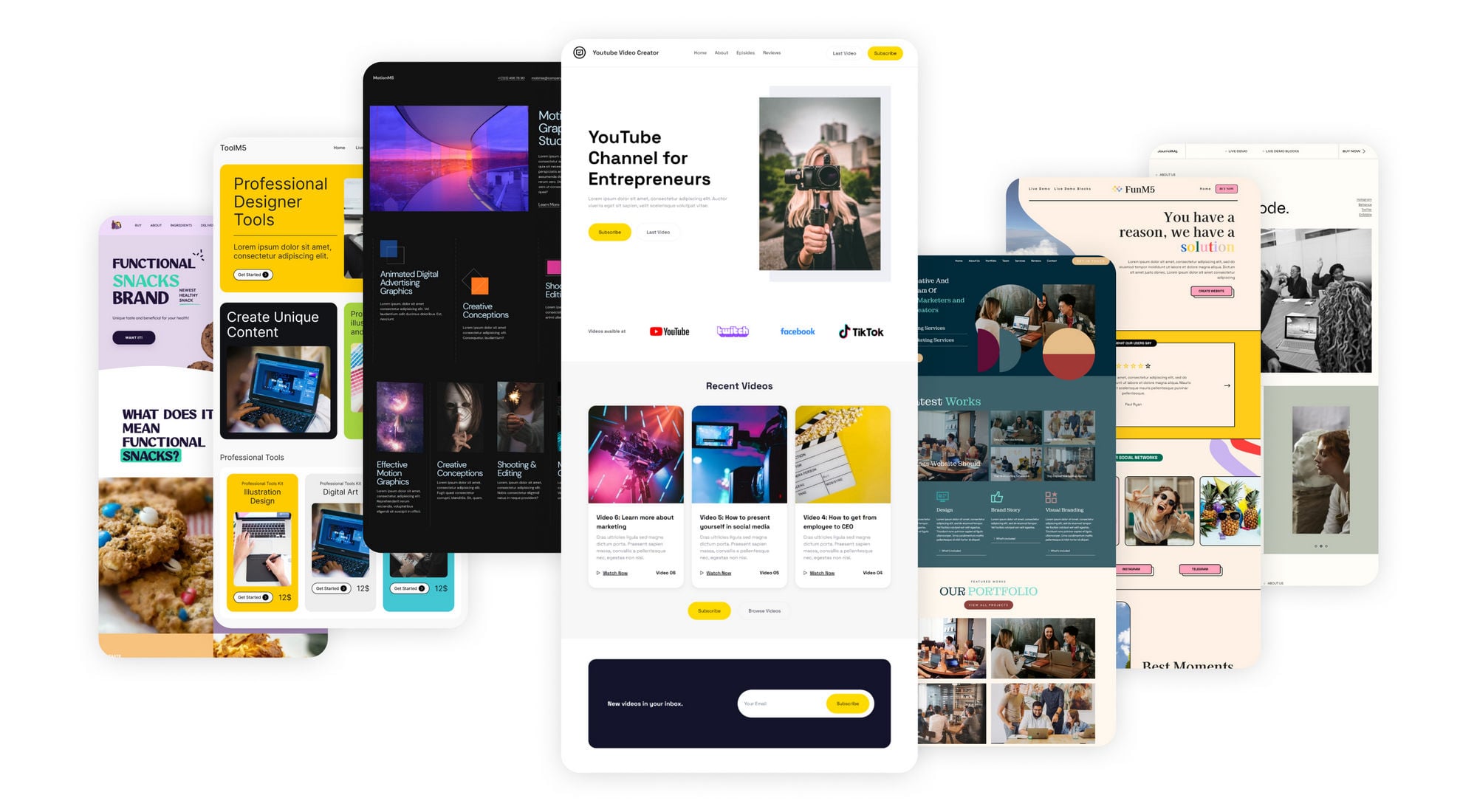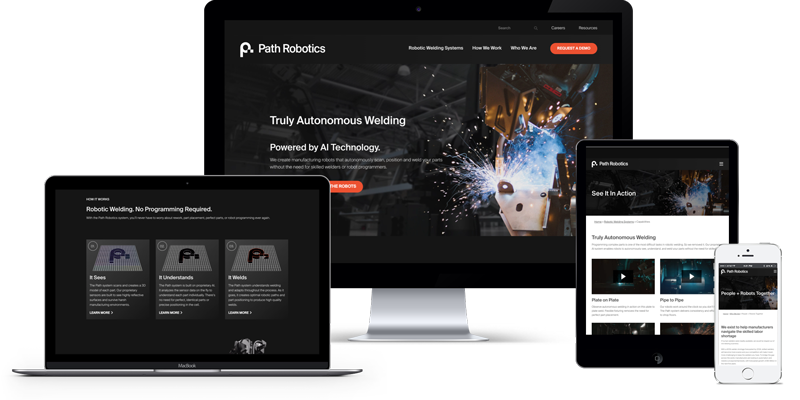Vital Devices Every Developer Needs for Magnificent Website Design
Vital Devices Every Developer Needs for Magnificent Website Design
Blog Article
Optimize Interaction: Proven Techniques for Superior Web Site Layout
In a significantly digital landscape, the relevance of a user-centric approach to internet site style can not be overemphasized. Recognizing exactly how effective navigation, visual pecking order, and material optimization converge to enhance individual involvement is important for any type of company seeking to make a meaningful impact. As we check out numerous tried and tested methods that contribute to impressive site layout, the interplay in between these aspects discloses not only best practices but likewise cutting-edge approaches that can boost individual experience. What might shock you is just how simple changes can result in exceptional changes in involvement metrics.
Relevance of User-Centric Style
User-centric style is important in developing efficient internet sites, as it focuses on the demands and preferences of completion individual from the very beginning of the style process (website design). This method makes sure that the web site is tailored to supply an optimal experience for individuals, promoting involvement and fulfillment. By comprehending individual behaviors, objectives, and discomfort factors, designers can develop user interfaces that reverberate with their target audience and promote a feeling of link
Carrying out user-centric style entails substantial research study, consisting of user characters and trip mapping, which assist in determining the specific requirements of various customer sectors. This data-driven method permits informed decisions pertaining to performance, format, and content, inevitably resulting in the creation of an extra enticing and intuitive web experience.
In addition, a user-centric strategy promotes availability and inclusivity, making sure that websites cater to varied user capabilities and choices. This not only boosts individual experience but also widens the audience reach. In a competitive electronic landscape, focusing on user-centric design is not just advantageous; it is crucial for driving engagement, reducing bounce prices, and fostering customer commitment. Efficient websites are those that resonate with individuals, making user-centric style a fundamental concept for effective web development.
Effective Navigating Methods
A well-structured navigation system is a foundation of effective internet site design, developing directly on the principles of user-centric layout. Reliable navigating permits customers to find info rapidly and with ease, boosting their overall experience and motivating longer check outs.
To attain this, consider implementing a clear pecking order in your navigating food selection. Main groups should be immediately noticeable, while subcategories can be revealed with dropdowns or expanding food selections. This organization aids users anticipate where they might locate relevant web content, decreasing disappointment.

Consistency is essential; make use of acquainted terms and design components throughout the site to stay clear of complication. Breadcrumb routes can also be useful, giving users with contextual understanding of their area within the website and making it possible for easy backtracking.
Finally, guarantee that your navigation is responsive and mobile-friendly. As even more individuals access web sites via smart phones, adapting your navigation for smaller sized displays is necessary for keeping use and accessibility. By focusing on these strategies, you can develop a seamless navigation experience that maintains individuals engaged.
Visual Power Structure and Design
Developing a clear aesthetic pecking order is vital for leading users with an internet site's material efficiently. A well-structured design not only enhances customer experience yet also influences exactly how site visitors interact and perceive with info. By tactically using size, spacing, comparison, and color, developers can create prime focus that accentuate the most important elements, such as headings, contacts us to action, or photos.
Integrating a grid system can additionally improve aesthetic hierarchy by giving a constant structure for material positioning. This organization allows users to browse the website with ease, making it less complicated to digest info (website design). Furthermore, using whitespace is vital; it develops breathing space around elements, lowering cognitive overload and emphasizing key web content

Web Content Optimization Techniques
While developing visually attractive styles is very important, the performance of a web site eventually depends upon just how well its material is enhanced for both online search engine and customer engagement. Material optimization involves a critical approach that enhances presence and importance, ultimately driving web traffic and preserving site visitors.
First, keyword study is essential. Identifying relevant key words that straighten with customer intent enables the combination of these terms naturally right into headings, message, and meta summaries. This not only aids in placing higher on search engines but likewise improves the clearness of content for users.

Furthermore, maximizing for local search engine optimization can increase involvement for region-specific audiences. Integrating local keywords and producing material that addresses local passions improves importance.
Last but not least, on a regular basis upgrading content makes certain that it remains useful and fresh, appealing to both search engines and returning individuals. By concentrating on these content optimization techniques, businesses can produce an engaging on the internet existence that promotes interaction and drives conversions.
Responsive and Mobile-First Approaches
Individual engagement and content visibility are progressively affected by the capability of an internet site to adapt effortlessly across numerous gadgets. With the rise of mobile surfing, utilizing receptive style and mobile-first approaches has ended up being essential for efficient internet development. Receptive layout makes sure that a single web site format adjusts fluidly to different screen dimensions, from desktop computers to smartphones, thus offering a constant customer experience.
On the various other hand, a mobile-first approach prioritizes the mobile customer her comment is here experience during the design process. Deliberately for smaller screens initially, developers can focus on necessary functions and improve efficiency, ensuring that individuals are not bewildered by unneeded content. This method also enhances filling times, which is important for maintaining visitors.
Both strategies add to higher involvement prices, as users are extra most likely to engage with a site that is easy to use and aesthetically attractive. Search engines favor mobile-optimized websites in rankings, thereby boosting presence. In summary, taking on responsive and mobile-first design techniques is important for making best use of individual engagement and guaranteeing that material remains available and efficient throughout all tools.
Conclusion
Effective navigating strategies, a well-defined aesthetic hierarchy, and optimization of material considerably improve individual experience. Collectively, these techniques not just assist in information access however additionally foster much deeper user interaction, ultimately adding to greater engagement rates and general website success.
As we check out numerous tested strategies that add to impressive web site design, the interaction between these aspects exposes not just best methods however additionally ingenious strategies that can boost customer experience.User-centric style is important in producing effective sites, as it focuses on the demands and preferences of the end individual from the very start of the layout process. Effective internet sites are those that resonate with individuals, making user-centric layout an essential principle for effective internet advancement.
Receptive design makes sure that a single internet site format changes fluidly to different screen sizes, from desktops to smartphones, therefore providing a consistent user experience.
In recap, embracing mobile-first and receptive style techniques is critical for taking full advantage of customer interaction and making certain that material remains easily accessible and effective across all devices.
Report this page